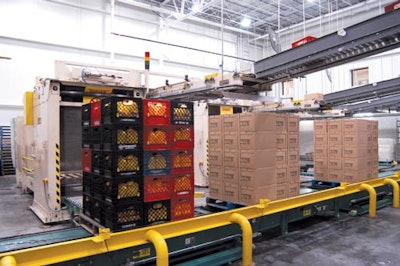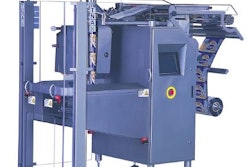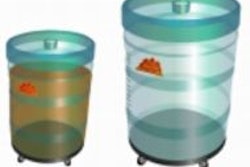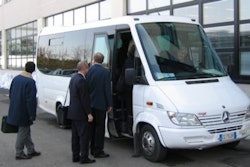To create a flexible environment that could handle milk packed in returnable plastic crates or in bliss-style corrugated boxes, Turner-Coleman Dairy, Little Rock, AR, used the talents of American Conveyor and palletizers from Currie Machinery.
American was able to salvage only 15’ of the dairy’s existing conveyors. It installed more than 1ꯠ’ of stainless-steel conveyors and another 1ꯠ’ of roller conveyors, including in-floor pan, knee-high, and elevated cable-style conveyors. The dairy remodeling was completed last summer with much of the installation restricted to weekends to avoid interfering with the dairy’s normal production.
“We asked for quotes from several different manufacturers,” says Turner’s operations manager, Mike Flagg. “Not only was American first to respond, but regional sales manager Bruce Macphearson provided a layout and a redesign that saved us money and increased our productivity.”
Because both plastic returnable crates and corrugated cases run from the packers to palletizers at the same time, American had to specify a plastic chain, Macphearson says. Typical metal chains could mark the corrugated boxes. In the layout, American used overhead conveyors with catch pans and drains to move the crates from the washer and toward the case packers. The distance is about 400’, Macphearson says, so the crates are mostly dry at the infeed to the packers, where they join the corrugated boxes that are set up in a dry warehouse area.
“Not only did American manage the installation on time, it co-managed other vendors to make sure it all came together when it was supposed to,” says Flagg. “Lots of companies talk about becoming partners, but American literally became an extension of Turner until the job was done.”
All column stacking
The key factor that permitted the almost interchangeable use of corrugated or plastic containers was the bliss-style corrugated that Turner already used. Because bliss-style boxes have the greatest strength in the corners, all pallet loads—whether corrugated or plastic—are column stacked.
For the expansion project, Turner consulted with an independent machinery representative, Harry Richards of Capper-McCall, on the selection of palletizing equipment. “Harry knew our plant and our intended application, so we relied on him,” Flagg says. “We knew we needed machines that could interchangeably palletize corrugated cases and plastic crates. This meant changeovers had to be easy.”
Richards recommended and Turner purchased three Model LSP-7 palletizers from Currie Machinery. “We selected them because, in our experience, Currie’s equipment not only performs as promised, but we can count on them to install and deliver when scheduled,” Richards says.
The LSP-7 features an oversized frame, a heavy-duty flip-up style case ram for pattern flexibility, and a heavy-duty rack-and-pinion-operated stripper plate, he points out. The only modification was the addition of the “squeezer” unit that holds a layer of plastic crates in position until it’s dropped onto the previous layer in the stacking process.
Turner typically palletizes into a 3x3 or split seven-case pattern, operating at a rate of 25 cases/min. The largest case is 12”x18” and the smallest is the industry standard 12”x12” plastic crate that holds four gallon jugs. Corrugated boxes are palletized on 40”x48” pallets, while the crates are loaded onto 40”x40” pallets. Both meet Grocery Manufacturers of America standards.
“We expanded our palletizing operations from one to three machines without requiring any additional labor,” Flagg states. “Plus, we met our goal of improving worker safety.”



























